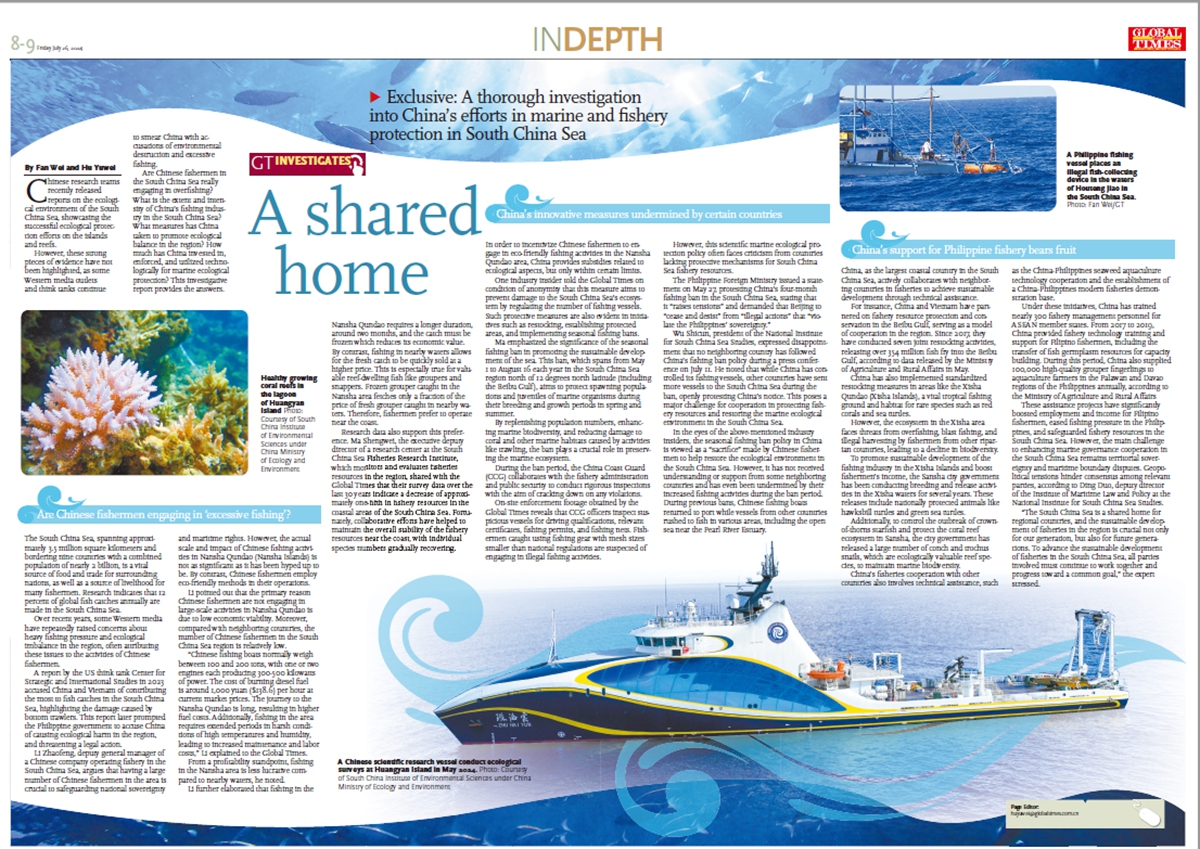Exclusive: A thorough investigation into China’s efforts in marine and fishery protection in South China Sea
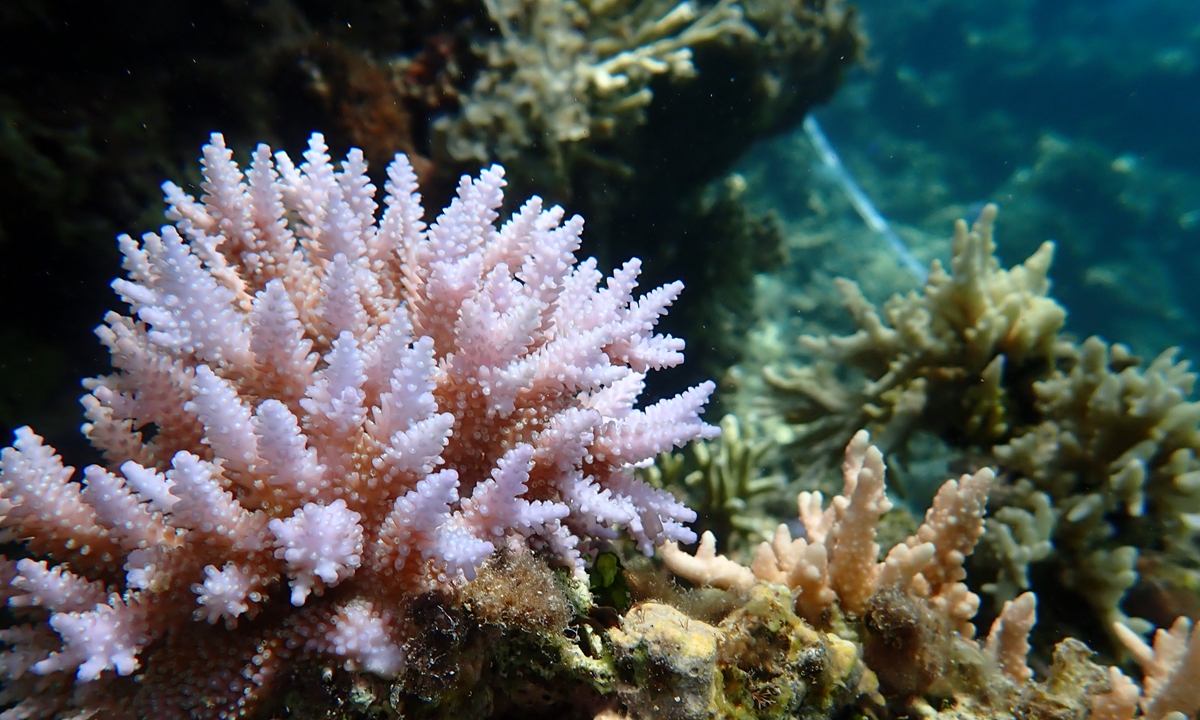
Healthy growing coral reefs in the lagoon of Huangyan Island Photo: Courtesy of South China Institute of Environmental Sciences under China Ministry of Ecology and Environment
Chinese research teams recently released reports on the ecological environment of the South China Sea, showcasing the successful ecological protection efforts on the islands and reefs.
However, these strong pieces of evidence have not been highlighted, as some Western media outlets and think tanks continue to smear China with accusations of environmental destruction and excessive fishing.
Are Chinese fishermen in the South China Sea really engaging in overfishing? What is the extent and intensity of China's fishing industry in the South China Sea? What measures has China taken to promote ecological balance in the region? How much has China invested in, enforced, and utilized technologically for marine ecological protection? This investigative report provides the answers.
Are Chinese fishermen engaging in 'excessive fishing'?
The South China Sea, spanning approximately 3.5 million square kilometers and bordering nine countries with a combined population of nearly 2 billion, is a vital source of food and trade for surrounding nations, as well as a source of livelihood for many fishermen. Research indicates that 12 percent of global fish catches annually are made in the South China Sea.
Over recent years, some Western media have repeatedly raised concerns about heavy fishing pressure and ecological imbalance in the region, often attributing these issues to the activities of Chinese fishermen.
A report by the US think tank Center for Strategic and International Studies in 2023 accused China and Vietnam of contributing the most to fish catches in the South China Sea, highlighting the damage caused by bottom trawlers. This report later prompted the Philippine government to accuse China of causing ecological harm in the region, and threatening a legal action.
Li Zhaofeng, deputy general manager of a Chinese company operating fishery in the South China Sea, argues that having a large number of Chinese fishermen in the area is crucial to safeguarding national sovereignty and maritime rights. However, the actual scale and impact of Chinese fishing activities in Nansha Qundao (Nansha Islands) is not as significant as it has been hyped up to be. By contrast, Chinese fishermen employ eco-friendly methods in their operations.
Li pointed out that the primary reason Chinese fishermen are not engaging in large-scale activities in Nansha Qundao is due to low economic viability. Moreover, compared with neighboring countries, the number of Chinese fishermen in the South China Sea region is relatively low.
"Chinese fishing boats normally weigh between 100 and 200 tons, with one or two engines each producing 300-500 kilowatts of power. The cost of burning diesel fuel is around 1,000 yuan ($138.6) per hour at current market prices. The journey to the Nansha Qundao is long, resulting in higher fuel costs. Additionally, fishing in the area requires extended periods in harsh conditions of high temperatures and humidity, leading to increased maintenance and labor costs," Li explained to the Global Times.
From a profitability standpoint, fishing in the Nansha area is less lucrative compared to nearby waters, he noted.
Li further elaborated that fishing in the Nansha Qundao requires a longer duration, around two months, and the catch must be frozen which reduces its economic value. By contrast, fishing in nearby waters allows for the fresh catch to be quickly sold at a higher price. This is especially true for valuable reef-dwelling fish like groupers and snappers. Frozen grouper caught in the Nansha area fetches only a fraction of the price of fresh grouper caught in nearby waters. Therefore, fishermen prefer to operate near the coast.
Research data also support this preference. Ma Shengwei, the executive deputy director of a research center at the South China Sea Fisheries Research Institute, which monitors and evaluates fisheries resources in the region, shared with the Global Times that their survey data over the last 30 years indicate a decrease of approximately one-fifth in fishery resources in the coastal areas of the South China Sea. Fortunately, collaborative efforts have helped to maintain the overall stability of the fishery resources near the coast, with individual species numbers gradually recovering.
China's innovative measures undermined by certain countries
In order to incentivize Chinese fishermen to engage in eco-friendly fishing activities in the Nansha Qundao area, China provides subsidies related to ecological aspects, but only within certain limits.
One industry insider told the Global Times on condition of anonymity that this measure aims to prevent damage to the South China Sea's ecosystem by regulating the number of fishing vessels. Such protective measures are also evident in initiatives such as restocking, establishing protected areas, and implementing seasonal fishing bans.
Ma emphasized the significance of the seasonal fishing ban in promoting the sustainable development of the sea. This ban, which spans from May 1 to August 16 each year in the South China Sea region north of 12 degrees north latitude (including the Beibu Gulf), aims to protect spawning populations and juveniles of marine organisms during their breeding and growth periods in spring and summer.
By replenishing population numbers, enhancing marine biodiversity, and reducing damage to coral and other marine habitats caused by activities like trawling, the ban plays a crucial role in preserving the marine ecosystem.
During the ban period, the China Coast Guard (CCG) collaborates with the fishery administration and public security to conduct rigorous inspections with the aim of cracking down on any violations.
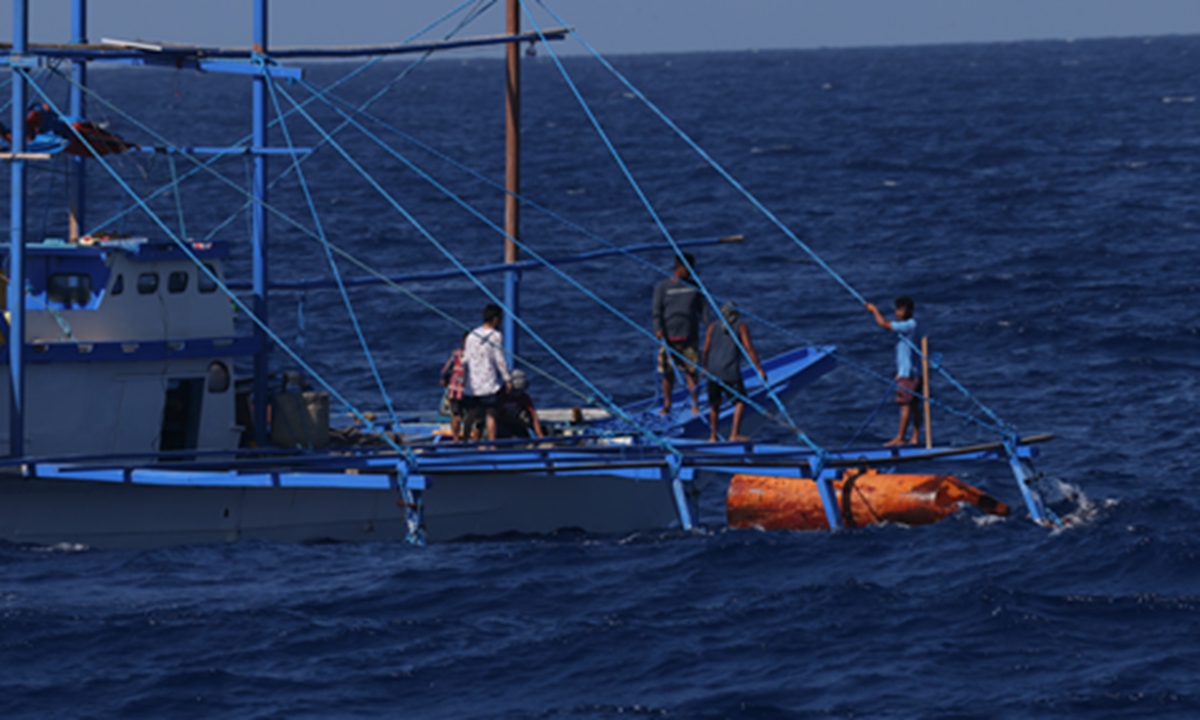
A Philippine fishing vessel places an illegal fish-collecting device in the waters of Houteng Jiao in the South China Sea. Photo: Fan Wei/GT
On-site enforcement footage obtained by the Global Times reveals that CCG officers inspect suspicious vessels for driving qualifications, relevant certificates, fishing permits, and fishing nets. Fishermen caught using fishing gear with mesh sizes smaller than national regulations are suspected of engaging in illegal fishing activities.
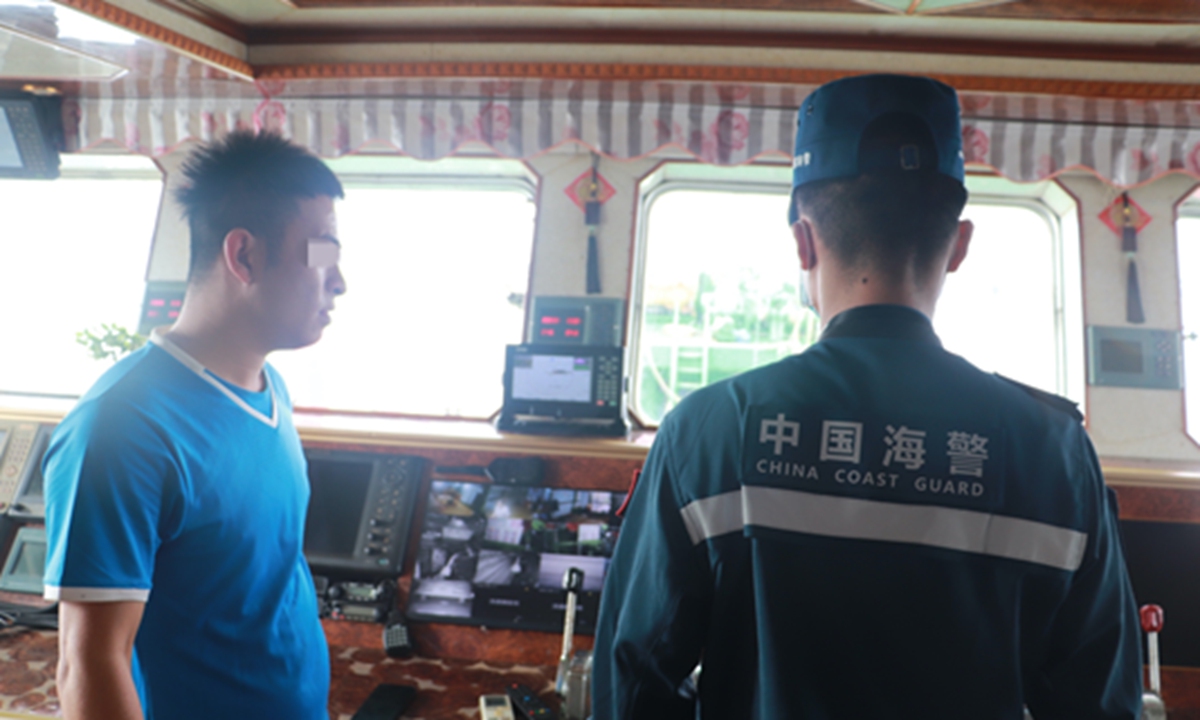
China Coast Guard (CCG) officers board fishing boats to inspect fishing nets and gear. Photo: CCG
However, this scientific marine ecological protection policy often faces criticism from countries lacking protective mechanisms for South China Sea fishery resources.
The Philippine Foreign Ministry issued a statement on May 27, protesting China's four-month fishing ban in the South China Sea, stating that it "raises tensions" and demanded that Beijing to "cease and desist" from "illegal actions" that "violate the Philippines' sovereignty."
Wu Shicun, president of the National Institute for South China Sea Studies, expressed disappointment that no neighboring country has followed China's fishing ban policy during a press conference on July 11. He noted that while China has controlled its fishing vessels, other countries have sent more vessels to the South China Sea during the ban, openly protesting China's notice. This poses a major challenge for cooperation in protecting fishery resources and restoring the marine ecological environment in the South China Sea.
In the eyes of the above-mentioned industry insiders, the seasonal fishing ban policy in China is viewed as a "sacrifice" made by Chinese fishermen to help restore the ecological environment in the South China Sea. However, it has not received understanding or support from some neighboring countries and has even been undermined by their increased fishing activities during the ban period. During previous bans, Chinese fishing boats returned to port while vessels from other countries rushed to fish in various areas, including the open sea near the Pearl River Estuary.
China Coast Guard (CCG) officers board fishing boats to inspect fishing nets and gear. Photo: CCG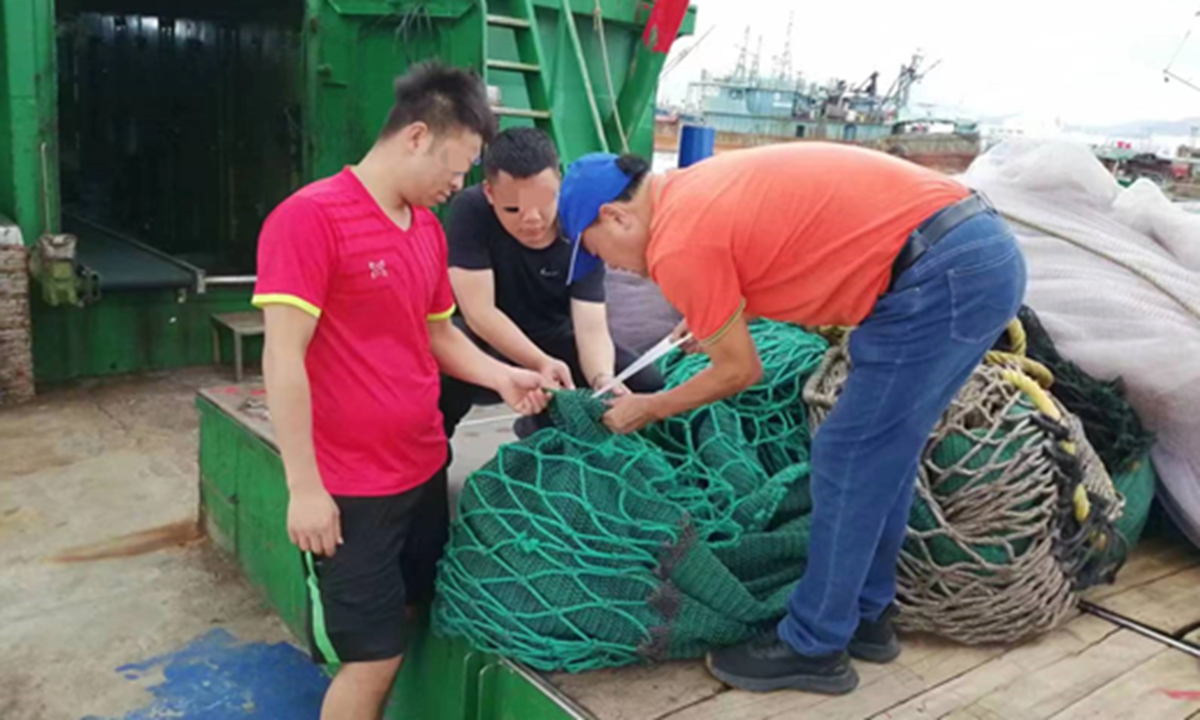
China, as the largest coastal country in the South China Sea, actively collaborates with neighboring countries in fisheries to achieve sustainable development through technical assistance.
For instance, China and Vietnam have partnered on fishery resource protection and conservation in the Beibu Gulf, serving as a model of cooperation in the region. Since 2017, they have conducted seven joint restocking activities, releasing over 354 million fish fry into the Beibu Gulf, according to data released by the Ministry of Agriculture and Rural Affairs in May.
China has also implemented standardized restocking measures in areas like the Xisha Qundao (Xisha Islands), a vital tropical fishing ground and habitat for rare species such as red corals and sea turtles.
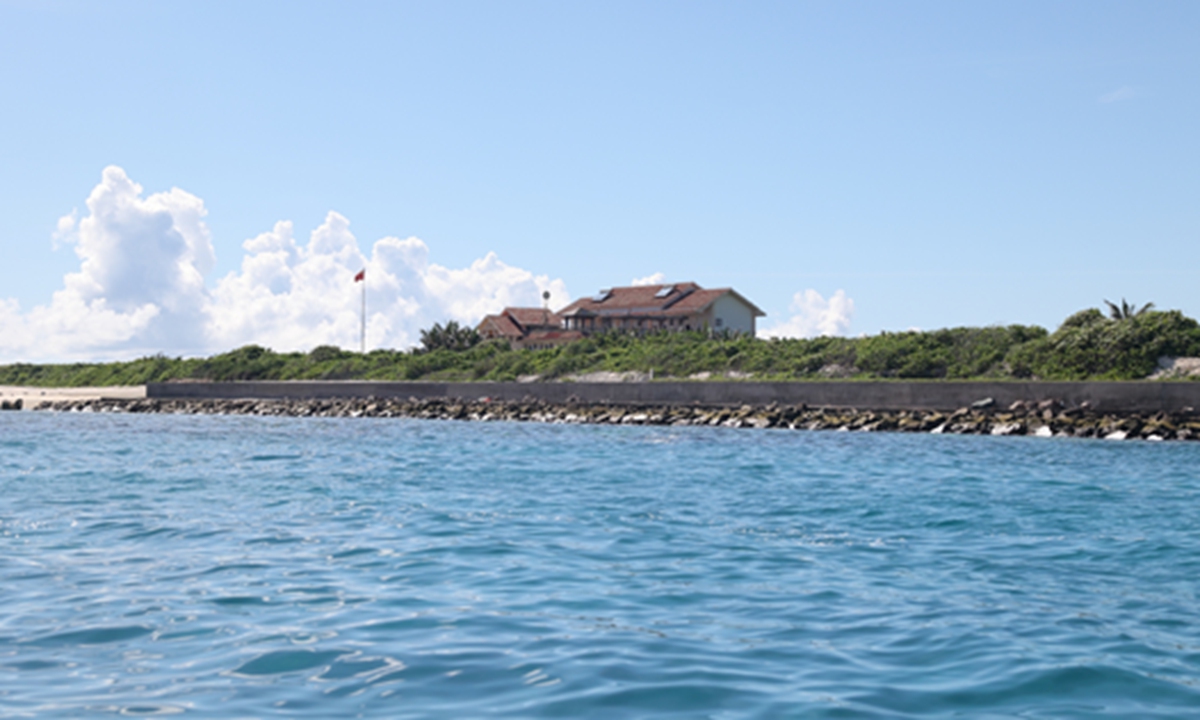
The Sea Turtle Conservation Center at North Island, Sansha city, South China's Hainan Province Photo: Fan Wei/GT
However, the ecosystem in the Xisha area faces threats from overfishing, blast fishing, and illegal harvesting by fishermen from other riparian countries, leading to a decline in biodiversity.
To promote sustainable development of the fishing industry in the Xisha Islands and boost fishermen's income, the Sansha city government has been conducting breeding and release activities in the Xisha waters for several years. These releases include nationally protected animals like hawksbill turtles and green sea turtles.
Additionally, to control the outbreak of crown-of-thorns starfish and protect the coral reef ecosystem in Sansha, the city government has released a large number of conch and trochus snails, which are ecologically valuable reef species, to maintain marine biodiversity.
China's fisheries cooperation with other countries also involves technical assistance, such as the China-Philippines seaweed aquaculture technology cooperation and the establishment of a China-Philippines modern fisheries demonstration base.
Under these initiatives, China has trained nearly 300 fishery management personnel for ASEAN member states. From 2017 to 2019, China provided fishery technology training and support for Filipino fishermen, including the transfer of fish germplasm resources for capacity building. During this period, China also supplied 100,000 high-quality grouper fingerlings to aquaculture farmers in the Palawan and Davao regions of the Philippines annually, according to the Ministry of Agriculture and Rural Affairs
These assistance projects have significantly boosted employment and income for Filipino fishermen, eased fishing pressure in the Philippines, and safeguarded fishery resources in the South China Sea. However, the main challenge to enhancing marine governance cooperation in the South China Sea remains territorial sovereignty and maritime boundary disputes. Geopolitical tensions hinder consensus among relevant parties, according to Ding Duo, deputy director of the Institute of Maritime Law and Policy at the National Institute for South China Sea Studies.
"The South China Sea is a shared home for regional countries, and the sustainable development of fisheries in the region is crucial not only for our generation, but also for future generations. To advance the sustainable development of fisheries in the South China Sea, all parties involved must continue to work together and progress toward a common goal," the expert stressed.
